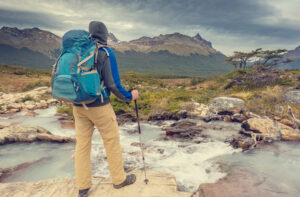Essential Equipment for Hiking Adventures


Hiking is a rewarding way to explore the great outdoors, offering physical exercise and a mental reset. However, your experience can quickly turn from enjoyable to risky without the right gear. Whether taking a short trail near home or on a multi-day trek through rugged terrain, proper hiking equipment is crucial for safety, comfort, and success.
Clothing That Performs on the Trail
Selecting the proper clothing for hiking is about more than just staying comfortable. It protects you from the weather, terrain, and even insects. Start with moisture-wicking base layers that pull sweat away from your body, helping you stay dry and avoid chafing. Synthetic materials and merino wool are excellent choices. Cotton, on the other hand, holds moisture and can cause rapid heat loss in cold conditions.
Next, add insulating layers like fleece or down jackets for warmth during cool mornings or changing elevations. Always bring a waterproof and windproof outer shell, even if the forecast looks clear. Mountain weather can change rapidly, and a sudden storm can catch you off guard. Lightweight hiking pants, preferably with zip-off legs, help adapt to temperature shifts. Don’t forget a wide-brimmed hat, sunglasses, and sunscreen to guard against sun exposure.
Choosing the Right Footwear
Footwear might be the most critical piece of equipment for hiking. Good hiking boots or shoes can prevent injury, support your feet over varied terrain, and keep you comfortable on long treks. Sturdy ankle-high hiking boots with firm soles provide the best protection and stability for rough or rocky trails. Trail shoes are a lighter option and are suitable for well-maintained paths or day hikes.
When choosing footwear, consider the terrain and your pack weight. Heavier loads usually demand more supportive footwear. Pair your shoes or boots with moisture-wicking, padded hiking socks. It’s smart to carry an extra pair in case one gets wet. Also, break in your footwear before hitting the trail to avoid painful blisters.
Backpacks and Carrying Gear
Your backpack needs to match the length and intensity of your hike. Daypacks are ideal for short hikes and typically range from 15 to 30 liters in capacity. For multi-day hikes, look for a backpack with 40 to 70 liters of space, load-bearing hip belts, and adjustable shoulder straps.
Hydration is non-negotiable, so choose a backpack with space for a hydration bladder or water bottles. Many models include external pockets and straps for trekking poles, sleeping pads, or rain covers. Consider organizing your gear using dry bags or packing cubes, which keep items sorted and protect sensitive gear like electronics or clothing from moisture. A compact rain cover for your backpack is also wise, especially in unpredictable climates.
Navigation Tools and Safety Equipment
Bringing navigation tools is essential, no matter how familiar you are with a trail. A paper map and compass provide a reliable, battery-free backup to modern GPS devices. Though GPS and smartphone apps like AllTrails or Gaia GPS offer convenience, they can run out of power or lose signal in remote areas. A portable power bank helps, but analog tools provide peace of mind.
Emergency equipment should never be overlooked. Always carry a whistle, headlamp or flashlight, multi-tool, and a first-aid kit tailored to your group size and duration. Include essentials like bandages, antiseptic wipes, tweezers, pain relievers, and personal medications. Some hikers also bring emergency blankets, fire starters, or personal locator beacons (PLBs) when venturing into backcountry areas. These can make a life-saving difference in case of unexpected injury or getting lost.
Food, Hydration, and Shelter Essentials
Fueling your body is as important as what you wear or carry. Always pack high-energy snacks like trail mix, protein bars, dried fruits, or jerky. For longer hikes, bring meals that are lightweight and easy to prepare, such as dehydrated backpacking meals or instant noodles. Don’t forget a lightweight stove, fuel, and utensils if you plan to cook.
Clean drinking water is critical. Carry enough for your entire hike, or bring water purification options like filtration straws, iodine tablets, or a pump filter. Streams and lakes may appear clean, but can carry harmful bacteria or parasites.
Your shelter system needs to be durable and easy to set up for overnight hikes. Tents, bivy sacks, or hammocks with rainfly covers can work well, depending on your preference. A quality sleeping bag rated for the expected temperature and a sleeping pad for insulation from the ground will keep you warm and rested.
Being well-prepared with the right hiking equipment can enhance your outdoor experience and keep you safe despite nature’s unpredictability. From choosing proper clothing and footwear to packing essential tools and nourishment, every item has a role in your adventure’s success. As you gain experience, you’ll learn what works best for your hiking style and adapt your gear accordingly. But always remember—respect for nature and preparedness go hand in hand on any trail.
